RAJ AND SWARAJ
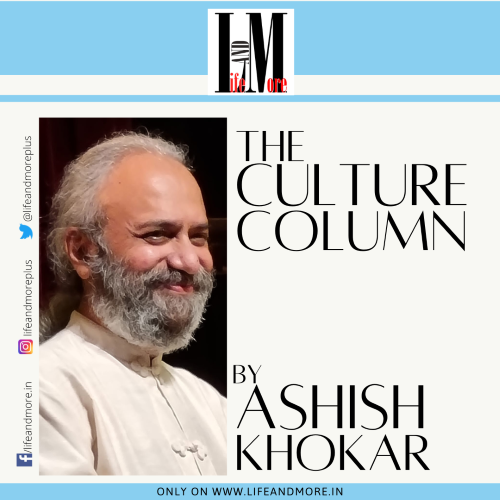
As Independence Day approaches, I’m reminded of Swaraj is my birthright slogan. Today it has a totally new meaning: I ,me, myself.
Tilak, Bal (nothing childish about him) Gangadhar was a Puneite. Well, that’s how we remember him even if he was born in Bombay he was brought up in Pune. Growing up in Punjab in 1960s, after Baroda, then Delhi, one didn’t even know where Poona was those days. It was somewhere below or near Bombay, the city by the sea and full of film stars.
On a first visit to Bombay, in 1967, we two close brothers – Nandan and I – were trying to open train windows when a rather uppity Bombay aunty in polka dress (them Anglo Indians, as they were then called; the last vistage of British India, seated next to us) told us rather sternly: Bacho! Tum log kya karta? Yeh full AC train hota hai, tum ko malum AC mane cool air, Thanda Thanda like fridge, so no open window! We thought our fate and trip was sealed. Literally. Them dark glasses didn’t afford us the normal view, wind in face and hair sooted by charcoal-engine trip. One day later, we arrive in Bombay Central. This to us villagers from Delhi, in 1967, looked like London, New York or Paris. Smart people, even then scurrying off purposefully (they had to work, unlike us villagers or royalty from North, who just talked and ambled all day along) and dressed brightly.
Our host came in an Impala car to fetch us. In Delhi, father’s office car was an old Dodge station wagon. DLE 145. This Bombay aunt was actually from our Baroda Alkapuri days. Neighbours. Sindhis. Very stylish. Eating toast for breakfast while we asked for roti, bread. We wanted jam, she gave marmalade. One of her spoilt daughters used real chocolate for school textile colouring project when we craved for a bar. Their life was very hard: it was a worry for them how to spend money! They did this by going to fancy restaurants, shops, hotels and meeting film stars. Dev uncle drove to meet them at Juhu beach “Sun N Sand “(the happening hotel those days) in his black and white chess-checked Benz! That’s Dev Anand , not some sidey called Dev. Manoj (Kumar) was there too. Swimming in the pool with a bevvy of beauties. His Upkaar film had been a big hit and we thought what’s a poor farmer or Army man doing in a fancy hotel pool with bar? There were no cameras those days so we have no proof or selfie. Lacchu Tauji took us to one Meena aunty’s home – heavy, dark and ornate – and she was in some film on Kathak dancers (Pakeezah, that took like 12/13 years to make). That’s the Meena Kumari. Sachin (Shankar ) uncle , Sitara (Devi) aunty who took us to meet the Kapoors… Raj dada, Shammi ji, young Shashi and baba Rishi, our age. All famous-in-film folks. We saw our first disco then, got our first zipped turtle high-neck shirt and first Beatle shoes.
We returned to Delhi 15 days later and felt oh no, where have we come back? Babu land. Drab, dull. DDA had not happened yet so the sarkari flats were not that pale yellow we often see now. Palam airport meant cows grazed near the few flights that landed. And Delhi with its refugees, looked poor indeed. We, especially our parents, were part of the Partitioned generation that also saw two wars with Pakistan. 1965 and 1971.
Often, when sirens went off we had to dig trenches to hide at night in Jullunder, Punjab. My grandfather was in British Army – a dull job as the commissioner of accounts – so two of my father’s siblings were in Indian Army as lady doctors, when India became Independent. A rarity those days. In Delhi, we had to blacken all windows with dark paper so enemy planes could not spot us with lights on (no one had heard of radars, then) and lived in fear, with rations and all.
So, Bombay was like another country and Madras, my god. People dancing and singing as though there was no tomorrow. Flowers in hair. Variety of breakfast items: mostly made of rice, in one form or the other. Fermented, demented or cemented! They had never faced any hardships, Partition or wars, really. Going on with their insular culture, simple but sensible people. Math geniuses. Building temples in faraway lands that couldn’t even be pronounced! Visiting our cousins there (mother was a Madrasi, as North Indians would describe all the folks living South of Bombay) we felt we were foreigners, wearing short clothes, Beatle shoes while they had no chappals even (we realised much later, there were so many roadside temples that taking off footwear every two minutes made a chappal-less walk, easier). The north south divide then was real.
Pune then was like the cut-off point. No man’s land, in between north and south. Deccan. We knew only old aunty Menaka, who lived between Bombay and Poona. Some wala wala place. Khandala. She added Madame to her name to sound French, while it was Germany which gave her a medal for dancing for India in the curtain cultural contingent of the opening ceremony in the Berlin Olympics of 1936. We had heard of only one German till then, Hitler. We were told he wanted to be a painter but an art school in Vienna refused him admission, so in the end he took the whole country! Her adopted daughter Damayanti Joshi, later a doyenne of Kathak, was the first one who saw me in the hospital in Baroda when I was born. Father was too busy teaching at MSU Baroda and was upset why I was born in middle of an odd date like a leap year? He didn’t come to see me till his evening classes were over. Third child syndrome, eh? Maybe he was a bit disappointed with yet another boy. A daughter who would dance is what they must have desired, both being in the dance field. They tried later to teach me three forms but I couldn’t be disciplined! All gurus – Kundanlal ji for Kathak, Swarna Saraswati for Bharatanatyam and Mayadhar ji for Odishi – gave up on me. Then I thought modern dance was best for me because anything could be done on stage and a fancy title with Western music, enough. Marriane Balchin taught me classical ballet in the hope I could tip toe like Washim Raja of today. He danced for the World Dance Day celebration in Bangalore recently and see this photo in action: His whole six-feet body is in motion and all weight is on one toe! If that’s not art and balance, what is? Poetry in motion is often used phrase but it fits him well.
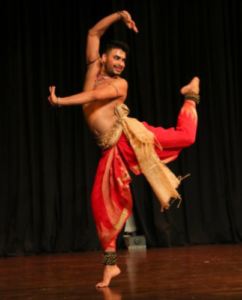
At the same venue – BIC, that’s Bangalore International Centre, best cultural address now in this high tech city, a slice of music history of Andhra region was presented by Seetha Rathnakar, a talent from the television industry. It was a compilation on her mother – Anasuya, a star of 1960s and 1970s of the folks music of Kakinada region. She was a stylish lady, always matching her bindi with her sari colours. What a darling and delightful character she was, it comes through in this homage. Her other daughter, the Kuchipudi star Rathna Papa Kumar, now settled in USA, has inherited her nose, style of dressing and bindas attitude to art.
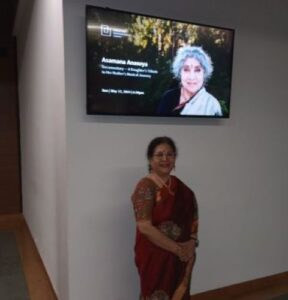
I was at Poonawalas and Pune. 50 years later, I got a chance to really understand this uniquely odd city. Pune. Swaraj, Tilak ji and all came to my mind. What was Pune like today? Modern, IT and all. Chitale sweets and ice cream. Shrewberry biscuits. Irani cafes. Parsi delights and many dancers who have made it home. They came from Bombay and settled here like senior-most Bharatanatyam talent Sucheta Chapekar nee Bhide. Pt. Gopi Krishna, that energetic Kathak dancer from Sitara Devi gharana, whose ace disciple Maneesha Tai (all elder ladies are tais) had settled here and made his brand of Kathak, popular. If her annual dance day celebrations dovetailing with the International Dance Day 29/4 were anything to go by – 500 ticketed audience and 100+ students dancing in 16 items – each different from the other (detailed review see on www.narthaki.com as that’s a dance column, this is a broader culture column) then what to say of many others like the mother-figure of dance scene pandita Rohini Bhate disciples Shama Bhate Tai, Nilima Adhye Tai, Roshan Tai and many more. Gawd! Pune has more quality Kathak dancers than Delhi or Bombay. Next generation already in place with stars like Rujuta Soman, Prajakta Atre, Manasi Deshpande and more. Too many to recount here. Better you get a copy of Pune dancers we have just brought out from: loudapplause31@gmail.com.
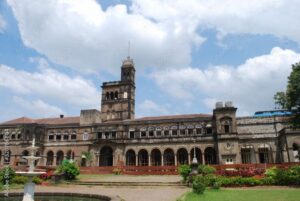
Guest edited by Neha Muthiyan, herself a Kathak dancer of note, this is a first-ever updated compendium of the Pune dance scene. Never before in last 100 years had one been attempted or published. PhD toh banti hai. Neha ki. Hope some university takes note of this and gives her an honorary PhD, since Pune is also called the Oxford of the East. Let’s see if they have heart; brains they have.
attenDance Pune Special and launch in Pune (left) and the book cover
Culture is not a product. It is a process. Kalakshetra wasn’t built in a day. Ruku aunty (as we called her at home, since she was also father’s guru, he being the first male student of Kalakshetra from North India) started off innocently, in 1936, when at Theosophical society she organised a dance show on 30 Dec 1935. By Jan 6 1936, she was goaded by the Theosophical society to start a proper art school. When she started and became successful the same Theosophical society asked her out, saying dance music were not part of its mandate. Irked, she bought handkerchief-sized plots by the beach from fishermen and then made Kalakshetra. Which, today, is in news for all the wrong reasons.
Reasons there are plenty to be proud of as Indians. A booming economy. Strong governance. Shining image abroad. Young Indians don’t even know how good they have it. They have much choice but no role models. We had no choice but many role models. Our parents didn’t have extra money but they made extra time for all of us and all visiting relatives too. Today, parents have no time. Fulfilling unending demands of an American copied lifestyle, of use and lose. Money is King. Market is the queen. Mortgage the prince that makes one buy buy until death does us part by suicide or bank robbery to pay off the loans, as we often read. That’s also the culture today.
Refer to our growing up years as listed in the earlier paras. I stood in long ration lines, as a school-going child of 12 to get one tin of Rath or Dalda ghee in 1970s war-torn North India. When I brought it home, mother gave me a special treat – deep fried, oily parantha as reward. Other brothers were told first go stand in long ration lines then get a special treat. But being a mother, she was equal to all four brothers and gave them too. This when her alta hands from a performance at Rashtrapati Bhawan had not even dried! When asked whom did she perform for she was innocent enough to say some Saudi Sheikh our PM Indira Gandhi was hosting at the official banquet. That Sheikh was so pleased with the performance, he gave her and her musicians a small bag of gift. Gold coins! We asked where is it? She said your father took it saying as it was an official programme in the Rashtrapati Bhawan, any gift given is deemed belonging to the nation/ state! He was then head of Sangeet Natak Akademi and turned the gold coins to the state treasury. Today, who would do it? That’s culture too. Yesterday and today. Then it was need. Today, it is greed.
We lived in Delhi for 40 years but never possessed a flat even. If only we were from today’s times and climes: We’d have put those gold coins gift to good use! We gifted the IGNCA under an active and art knowing patrons, seven crores worth of dance collection created by the same couple – Mohan and Saroja Khokar. Partition or poverty didn’t dampen our spirits or Punjabi generosity backed with Tamil brain!
Today young Indians have it so good that they don’t even know how good the going is. True there are less jobs but then there is more population too. Control that first. Why didn’t any government touch this sensitive subject long ago? Delhi in 1947 had under 40 lakh populace. Today? 20 million (give or take) . Ditto for other cities. We came to B’lore 25 years ago. There are four cars on MG Road. My Times of India office (I was their dance critic in Delhi for 15 years then five in B’lore) had five staff members. Today? Hundreds.
The young today don’t have to suffer or stand in long lines. Digital India has made that possible. Things like ghee and all are delivered home and then they complain. They have so much choice still they complain. They have much more disposable income, still they complain. They can move from houses to relationships, still they complain. Swaraj is my birthright has a totally new meaning today.
Ashish Khokar uses humour to make serious points on our culture and society. A historian by training, artiste by disposition and organiser by nature, in his spare time he has also published/authored 50 books; over 5000 articles in mainstream media in the last 45 years and served many cultural institutions in India and abroad, making him a renaissance man. He is also a pioneer in arts administration and international culture education since the 1980s. He is hailed as the gold standard of archiving, documentation and dance history. For full bio : www.attendance-india.com



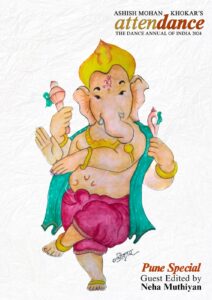
3 Comments
Your wit and perspicacity have no match Dada!
Dear Ashish, I enjoyed your article with your icey ,spicy and tasteful humour bringing home the truth. Thanks for sharing.
Khokar effortlessly traverses time and India in his characteristic satirical style. His solemn observations of life and society, and his keen sense of the real, all cloacked in delightful wit makes this article a reader’s delight.